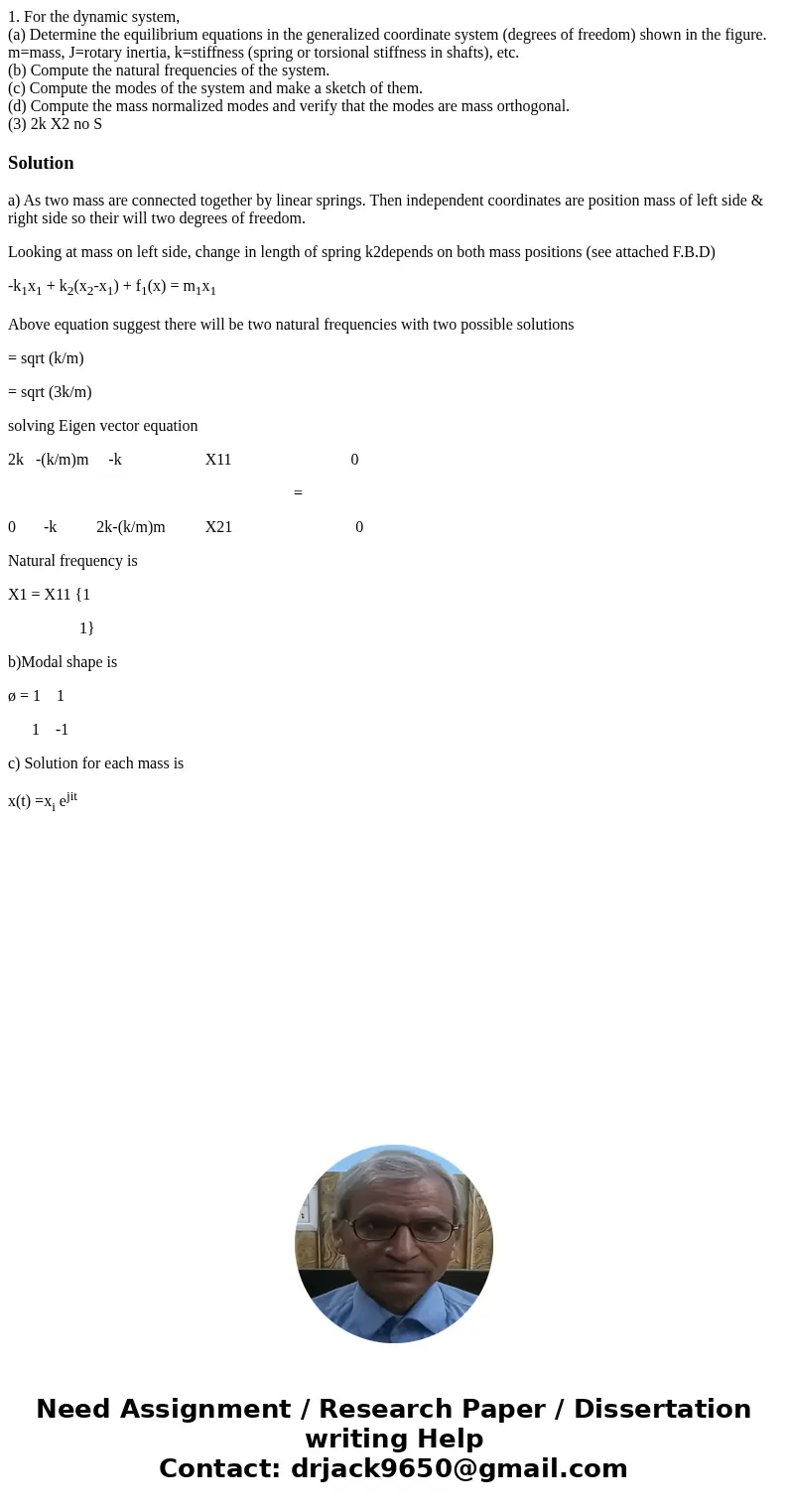1 For the dynamic system a Determine the equilibrium equatio
Solution
a) As two mass are connected together by linear springs. Then independent coordinates are position mass of left side & right side so their will two degrees of freedom.
Looking at mass on left side, change in length of spring k2depends on both mass positions (see attached F.B.D)
-k1x1 + k2(x2-x1) + f1(x) = m1x1
Above equation suggest there will be two natural frequencies with two possible solutions
= sqrt (k/m)
= sqrt (3k/m)
solving Eigen vector equation
2k -(k/m)m -k X11 0
=
0 -k 2k-(k/m)m X21 0
Natural frequency is
X1 = X11 {1
1}
b)Modal shape is
ø = 1 1
1 -1
c) Solution for each mass is
x(t) =xi ejit

 Homework Sourse
Homework Sourse